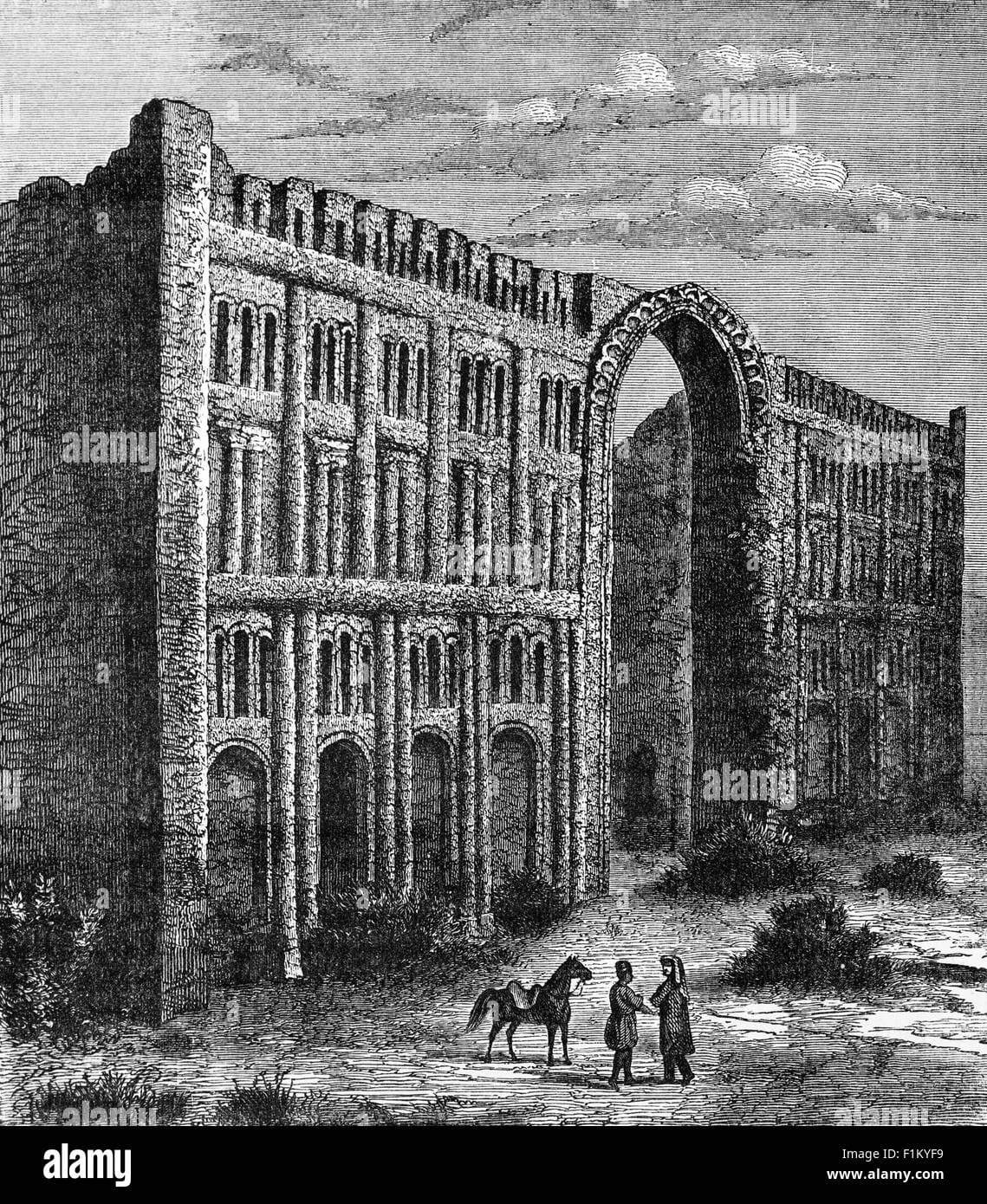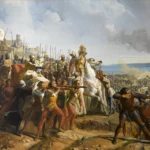The name Nebuchadnezzar II evokes images of ancient power and grandeur, a ruler whose influence reverberates through history. Ascending to the Babylonian throne in 605 BCE, he inherited a kingdom already shaped by his father, Nabopolassar. Yet, Nebuchadnezzar II was not content with mere inheritance. He was a warrior king who, through a series of audacious military campaigns, forged an empire that stretched across the ancient Near East. His name became synonymous with both military might and architectural ambition, leaving behind a legacy as complex as the empire he ruled.
From Carchemish to Jerusalem: The Rise of a Military Powerhouse
Nebuchadnezzar II’s reign began on the battlefields. In 605 BCE, he secured his place in history at the Battle of Carchemish. This decisive victory against the Egyptian forces vying for control of the region marked the beginning of Babylonian dominance. Nebuchadnezzar II’s military prowess extended far beyond Carchemish, however. He led campaigns that subdued kingdoms from the sun-baked lands of Egypt to the fertile plains of Syria, expanding the Babylonian Empire and solidifying his reputation as a formidable conqueror.
Perhaps the most impactful of Nebuchadnezzar II’s campaigns were his conquests of Jerusalem in 597 BCE and again in 587 BCE. These sieges, culminating in the destruction of the First and Second Temple and the exile of a significant portion of the Jewish population to Babylon, would become defining moments in both Babylonian and Jewish history. The Babylonian Captivity, as this exile is known, reverberates through religious texts and continues to fascinate historians today.
A Golden Age in Babylon: More Than Just a Conqueror
Nebuchadnezzar II’s legacy extends far beyond the battlefield. He was a visionary builder, driven by a desire to transform Babylon into the most magnificent city in the ancient world. Under his rule, Babylon did indeed become a spectacle of grandeur. Towering ziggurats, their glazed bricks shimmering in the Mesopotamian sun, reached towards the heavens. Grand palaces, adorned with intricate carvings and vibrant murals depicting tales of Babylonian gods and heroes, stood as testaments to his power.
The legendary Hanging Gardens of Babylon, considered by many to be one of the Seven Wonders of the Ancient World, are often attributed to Nebuchadnezzar II. While their exact nature and location are still subject to scholarly debate, the possibility that he commissioned this botanical marvel for his wife, Amytis, adds another layer of intrigue to his reign.
Nebuchadnezzar II’s ambition went beyond bricks and mortar. Recognizing the importance of knowledge and culture, he became a patron of the arts and sciences, attracting some of the most brilliant minds from across his vast empire. Under his rule, Babylon flourished as a center of learning, with advancements in astronomy, mathematics, and medicine.
The Enigma of Nebuchadnezzar: Between History and Scripture
Nebuchadnezzar II’s reign was a time of immense change, a period marked by both destructive conquests and remarkable cultural achievements. He remains a figure of contradictions: a ruthless warrior capable of brutality, yet also a visionary leader who ushered in a golden age. His legacy continues to be a subject of debate among historians. Was he a tyrant or a builder, a destroyer or a preserver of culture? The answer, like most historical inquiries, is likely a complex combination of all these things.
The Bible, particularly the Book of Daniel, offers a different perspective on Nebuchadnezzar II. In this religious context, he is depicted as an instrument of God’s wrath, responsible for the destruction of Jerusalem and the punishment of the Israelites. The text describes his descent into madness, a period where he supposedly lived as a beast, as divine retribution for his hubris. While historians have not found conclusive evidence to support the biblical account of his madness, it remains a powerful part of his enduring narrative.
Nebuchadnezzar’s Enduring Impact: A Legacy Forged in Brick and Blood
Nebuchadnezzar II’s impact on the ancient world is undeniable. His conquests redrew the political map, his building projects left behind architectural marvels, and his reign is woven into the very fabric of religious narratives. He serves as a reminder that history is rarely black and white. He was a complex figure, capable of both great cruelty and remarkable vision, and his story continues to captivate our imaginations centuries later.
For more information about the fascinating history of ossuary churches, you can check out the ossuary church prague. Those intrigued by the tales of conquistadors and their search for buried treasure should read about pizarro’s gold.
- Unlock Water’s Symbolism: A Cross-Cultural Exploration - April 20, 2025
- Identify Black and White Snakes: Venomous or Harmless? - April 20, 2025
- Unlocking Potential: Origins High School’s NYC Story - April 20, 2025















